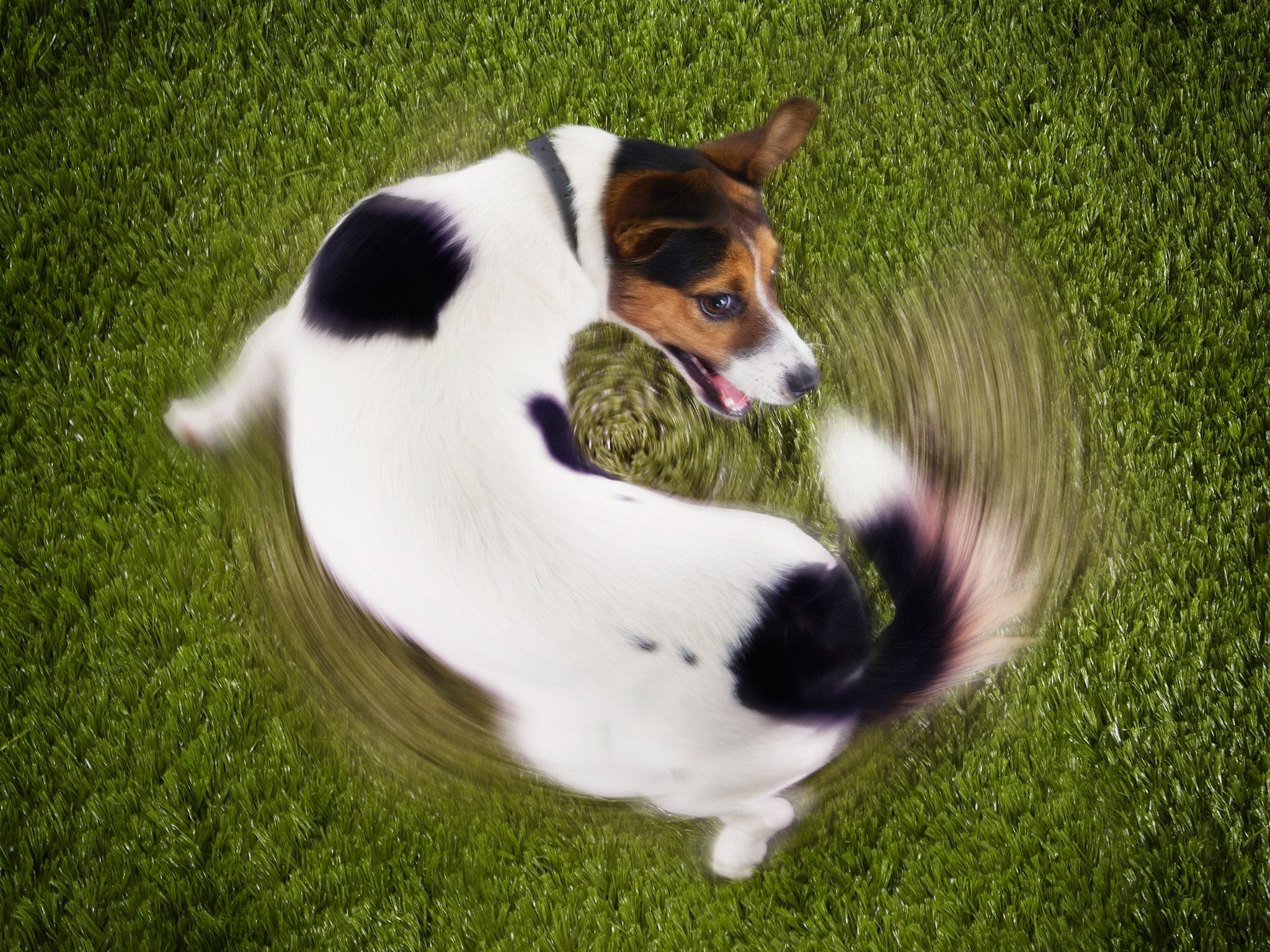Why do dogs chase their own tails? Scientists hope to discover the answer
Researchers promise treats for any non-tail chasers who help their studies

Is your dog the calm, collected type? If so, science may need your help to solve a canine health mystery.
After examining dogs that chase their tails, Bristol University researchers have called for non-tail chasers to act as a control group in a study aiming to uncover the mysteries of behaviour that has sparked countless YouTube videos, but left some vets worried.
Scientists from the two-year “Bristol Spinning Dog Project” will visit the homes of the 50 non-spinning dogs, collect urine samples and cheek swabs, and complete three training tasks aimed at assessing the pet’s personality and ability to learn.
The researchers promise that all participating dogs will be rewarded with food treats. Owners will have to make do with the satisfaction of knowing they have helped uncover “what spinning or tail chasing tells us about dog welfare”.
“Chasing your own tail” may have passed into the language as an expression for performing futile, energy-sapping tasks, but the reasons why dogs do it and the extent to which such behaviour should worry their owners are not fully understood.
The researchers have suggested a range of reasons why dogs chase their tails, including playfulness, a desire to attract the attention of humans, who will often laugh at their performance, or the anticipation of exciting events like being fed or taken for a walk.
In some cases, however, tail chasing may be due to anxiety or frustration at being unable to indulge in more “normal”dog behaviour.
One of the lead researchers, Beth Loftus, of Bristol University’s School of Veterinary Sciences, said: “There isn’t much information in the research literature about why dogs spin.
“We think this behaviour develops because of personality and genetics, as well as the environment during a dog’s first 16 weeks and learning throughout life. But we don’t really know what it means for dogs’ welfare.
“We hope to be able to identify dogs that are starting to spin and stop it from developing to the point where they are doing it almost to the complete exclusion of other, more normal types of behaviour.”
The researchers, whose work is being funded by the Dogs Trust charity, say non-tail chasing dogs of any breed, age or sex are welcome to join the study, provided they are fit and healthy. They would, however, prefer to work with animals living in Bristol and the surrounding area.
Join our commenting forum
Join thought-provoking conversations, follow other Independent readers and see their replies
Comments